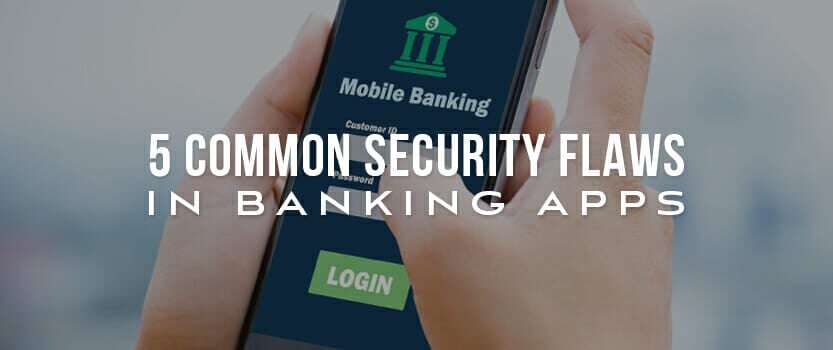2 min read
5 Common Security Flaws in Banking Apps
It’s a nightmare statistic: 29% of Android banking apps contain high-risk flaws. A lack of security is a problem for any app, but the banking...
Improve customer satisfaction and increase operational efficiency with a client portal.
Take control of your operations with customized software solutions.
Help your in-house dev team get more done, faster with our Midwest-based experts.
43% of people in the US are using mobile banking as of 2019. There is a greater necessity now more than ever to provide personalization to clients of your banking app; not only for consumer satisfaction, but also for bolstering security. So, how can your banking app achieve higher levels of personalization?
Banking has been made easier by the use of smartphones, but the need for extensive, stronger security accompanies this digital shift. That’s why we at Onsharp place great value on app security. For example, when we worked with Gate City Bank, we installed Touch-ID right on the login page of their mobile app. There are many other ways better security can be achieved with our mobile banking safety tips but app alerts can play a big role too.
App alerts have always been used to inform banking clients of important information regarding their accounts. They are tools that improve security and customer experience, and personalization can take this one step further.
App alerts personalization (in-app or not) has been known to contribute to digital banking security. It informs users of important information in real time and makes them feel more in control and involved with everything to do with their banking, helping them avoid potential issues. Additionally, personalization can lead to up to 15% revenue growth for financial institutions, making it a desirable asset for your banking application.
Banking apps’ digital alerts used to be devoid of personalization in the past and often only reached users through email. Recent developments allow users to have a greater control over the alerts they would like to receive, and greater flexibility. This means they can opt for push notifications, or SMS messages and pick and choose what information they would like to receive.
An effective alert strategy involves a two-way flow of information between the financial institution and the client. This system should be easily customizable by the client.
The alert system should incorporate:
There are different ways to take app alert systems one step further towards a top-notch personalized experience.
Geo-fencing is a location-based service with which your application can use location data from the device of the consumer to trigger actions such as digital alerts whenever the device enters a certain geographical area. The geofence is a virtually bounded area. This can be extremely useful for real time alerts. For example, if a client is passing by your bank’s branch, geofencing can trigger a notification to be sent to them reminding them to sign business documents, cash a check, etc. Capital One has utilized location based technology to alert their users whenever they are near an associated retailer.
Many people do not enjoy receiving an unnecessarily large amount of notifications. Flexibility helps combat this, and it also gives the customer greater control, which drives engagement and keeps bringing them back to the app.
27% of Millenials prefer a push notification over a SMS message. Push notifications are features of almost every kind of application. For banking apps, notifications can often be passive and only serve basic informational purposes, but this doesn’t necessarily have to be the case, and it could be an opportunity for a big update.
Inquiring about personal financial goals and allowing clients the option to receive insight from your financial institution can completely transform the function and effectiveness of push notifications. Many people may be happy to receive notifications that give them updates about personal financial goals from their bank itself instead of looking to third-party applications for things like investments and budgeting.
With all kinds of push notifications, actionable insight can drive engagement and banking app security at the same time. For example, if the client receives a notification regarding potential security concerns, provide actionable insight about what they can do such as adding biometric security measures, two-factor authentication etc.
Personalization is important, now more than ever for security and enhanced consumer experience. Especially during these times of COVID-19, there is increasing worry about mobile banking app security. More and more people have to switch to mobile banking, so making your application stand out with advanced personalization can be the key to success.
Contact us to update your personalization strategies and improve your banking application. Here at Onsharp we have the experience and tools to make your application the best it can be, while providing the best app security for your clients.

2 min read
It’s a nightmare statistic: 29% of Android banking apps contain high-risk flaws. A lack of security is a problem for any app, but the banking...

1 min read
At #TeamOnsharp, we’re always looking for ways different industries can keep their websites secure. Right now, we’re focusing on the ...

3 min read
Is your banking app vulnerable? Similar to COVID, hacking has become increasingly common these days. As many businesses and individuals...
